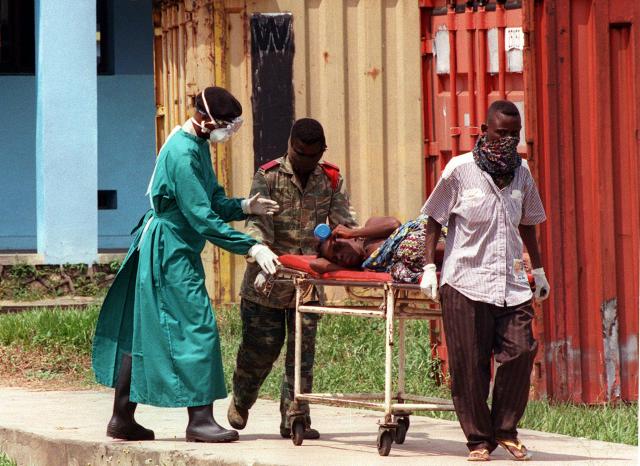New of the first diagnosis of Ebola in the United States has Americans searching for information about the deadly disease and wondering if they’re at risk.
Here’s what you need to know about Ebola symptoms:
1. Ebola Infection Begins With Contact of Bodily Fluid From an Infected Human or Animal
#Ebola cannot be spread through air, water, or food in the U.S.
Learn more and get the facts: http://t.co/Cn45X01hMf pic.twitter.com/8owDJhPEcp
— The White House (@WhiteHouse) October 1, 2014
While Ebola is highly contagious, you cannot become infected through the air, water, or through food in the United States. Infection is spread through bodily fluids, including blood, urine, saliva, feces, vomit, and semen of someone who already has the virus. Objects like needles and syringes contaminated with Ebola, can also spread it. Finally, Ebola can also be spread through the bodily fluids of infected animals and in some cases, may have been spread resulting from hunted animals for food and contact with infected bats.
2. Symptoms Appear Anywhere From 2 to 21 Days After Exposure
While symptoms for Ebola appear anywhere from 2 to 21 days, the average 8 to 10. With recovery from the virus generally dependent on the individuals own immune system and those who recover, can develop antibodies lasting for at least ten years. Additionally, the disease is not contagious before a carrier shows symptoms.
Those at the most risk are health care professionals, family and friends who could come in contact with the bodily fluids of the infected. Once someone is able to recover from Ebola, while they can no longer spread the virus, Ebola has been found in semen for up to 3 months after and those who have recovered, are advised to abstain from sex and use condoms for 3 months after.
While there's no vaccine, the U.S. is prepared to fight #Ebola: http://t.co/7QnL3coFfK #EbolaQandA pic.twitter.com/houuA8P8Md
— CNN (@CNN) October 1, 2014
3. Some Symptoms Include Fever, Headache & Joint Weakness
Some of the symptoms associated with Ebola are as basic as fever (greater than 38.6°C/101.5°F),headache, muscle pain, weakness, diarrhea, loss of appetite, abdominal pain and vomiting.
4. More Serious Ebola Symptoms Include Hemorrhaging
The more serious symptoms of Ebola are unexplained hemorrhage, sensitivity to light, swollen lymph glands and excessive bleeding when injections are given. During the second week of infection with Ebola, the person could get better, but more often they develop severe bleeding throughout their body and will probably not survive.
5. Ebola Gets Worse the Longer You Have it
Explainer: Ebola symptoms and how to stop the virus: http://t.co/FbQ7M9Lnit pic.twitter.com/iHNjneZfFq
— argusleader (@argusleader) October 1, 2014
The longer someone is infected with Ebola, the worse it gets, with bleeding internally and externally, including the eyes, ears and nose. Vomiting and coughing up blood, along with bloody diarrhea and rashes, can occur.

